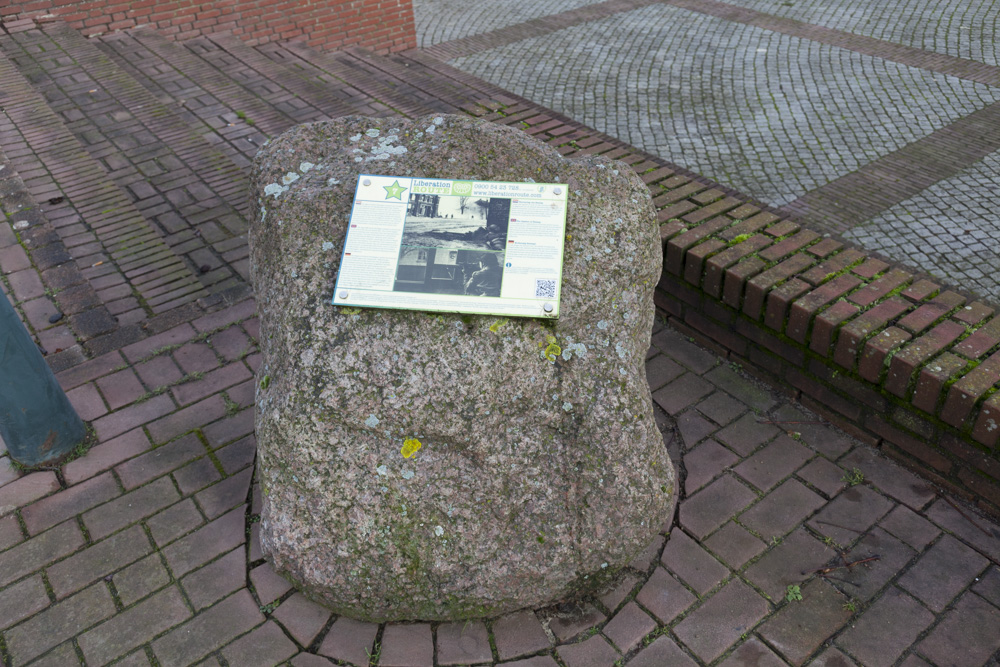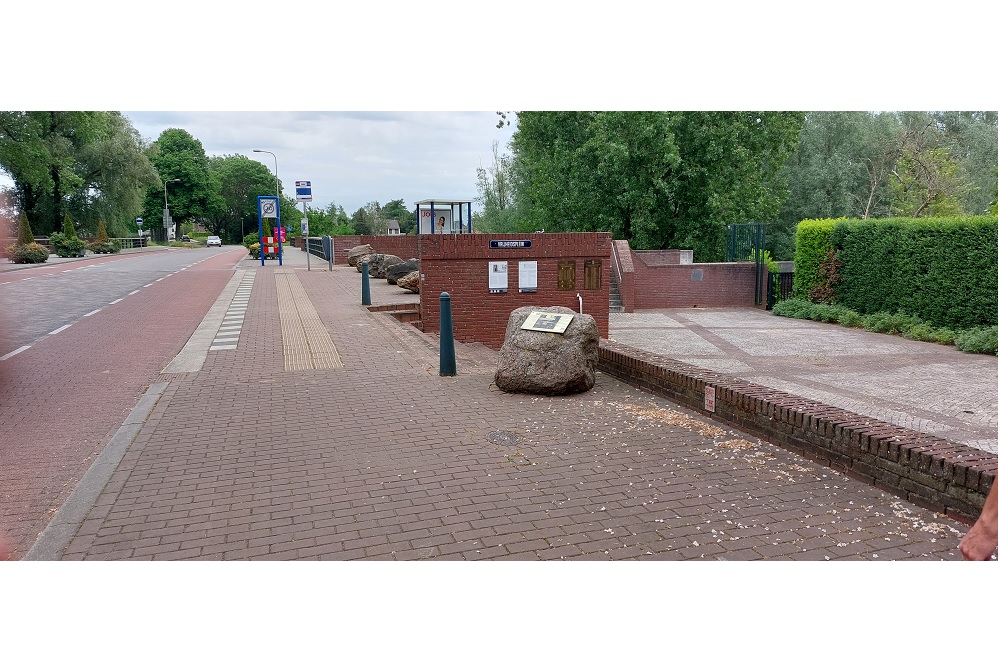Liberation Route Marker 007
Liberation Route Europe is a certified Cultural Route of the Council of Europe. With hundreds of sites and stories in nine European countries, the route links the main regions along the advance of the Allied Forces in 1943-1945.
The entire route consists of themed routes that can be travelled by by hiking, walking, cycling and car. These routes pass numerous historical and interesting sites and tell stories from a multitude of perspectives that were important in the final phase of World War II.
Many routes feature listening spots, offering the opportunity to listen to a historical story at a location. In addition, many ‘Vectors of Memory’ have been placed, indicating that the passer-by is on one of the Liberation Routes.
The routes can be found on the Liberation Route Europe website or in the app through which many stories can also be listened to.
The Capture of Gennep
For a long time, it appeared as if Gennep would remain untouched by the swirl of battle during the Second World War. This quickly changed when the River Maas became the temporary border between the battling sides. The Allies captured the town at the beginning of 1945. In this way, Gennep became the prologue of the Rhineland Offensive.
War reporting is of all ages, and goes back even to the highly detailed descriptions of Roman battles. The first Gulf War was brought into our homes thanks to Peter Arnett and CNN News. During the Second World War the British and Americans had their war reporters with them, who recorded their accounts in writing or with the camera.
The Allies finally captured the small town of Gennep early in 1945. The capture of Gennep was essential to open the way for the advance towards Goch and the heart of Germany. The attack on Gennep would be the start of what later became known as the Rhineland Offensive.
The Rhineland Offensive would in the end make possible the total liberation of Limburg, Gelderland, the Lower Rhine area, and then finally the whole of Western Europe.
Unimaginable numbers and quanities of personnel, vehicles, munitions, fuel and supplies were transported to the area. The border region became the key to the end of the Second World War. Never before had an offensive of such magnitude been launched from Dutch territory.
Audiospot - The Capture of Gennep
Do you have more information about this location? Inform us!
Source
- Text: TracesOfWar & Liberationroute.com
- Photos: Arjan Vrieze (1, 2), Peter Schipper (3)
Nearby
Museum
- Museum Remember September 1944 - Mook
- Freedom Museum - Groesbeek
- Museum "Van Postzegel tot Tank" - Groeningen
Point of interest
- Information Sign Niersbridge Gennep - Gennep
- Remains Sint Martinuschurch Gennep - Gennep
- Protestant Church Gemmep - Gennep
Monument
Cemetery
- Commonwealth War Graves Roman Catholic Cemetery Ottersum - Ottersum
- Dutch War Grave Roman Catholic Cemetery Ottersum - Ottersum
- Dutch War Grave Gennep - Gennep
Remembrance Stone
- Stumbling Stones Markt 15 - Gennep
- Stumbling Stones Houtstraat 4-6 - Gennep
- Stumbling Stones Zandstraat 6 - Gennep
Fortification
- River Bunker South Maas-line Oeffelt - Oeffelt
- River Bunker North Maas-line Oeffelt - Oeffelt
- River Bunker South Maas-line Oeffelt - Oeffelt







